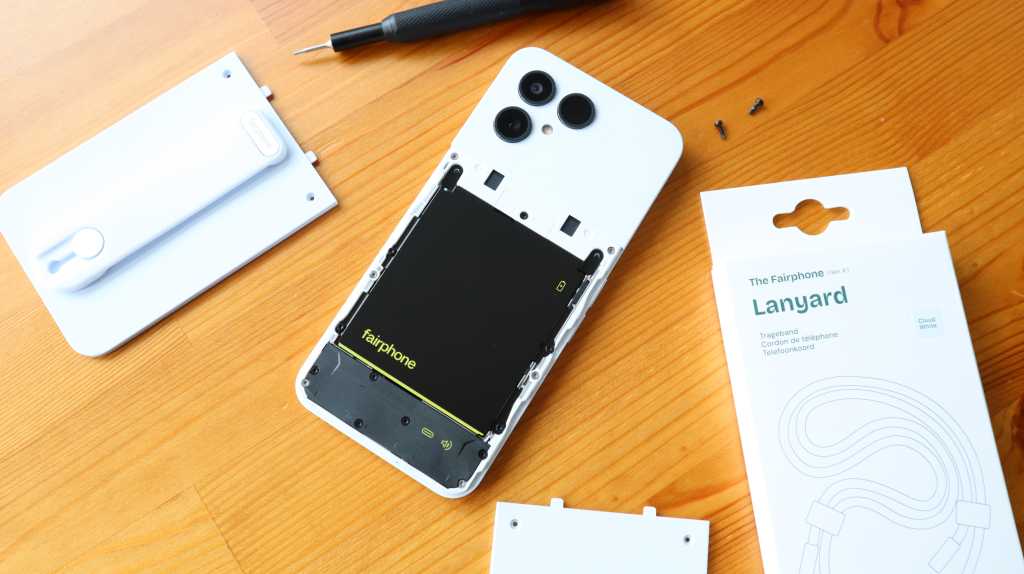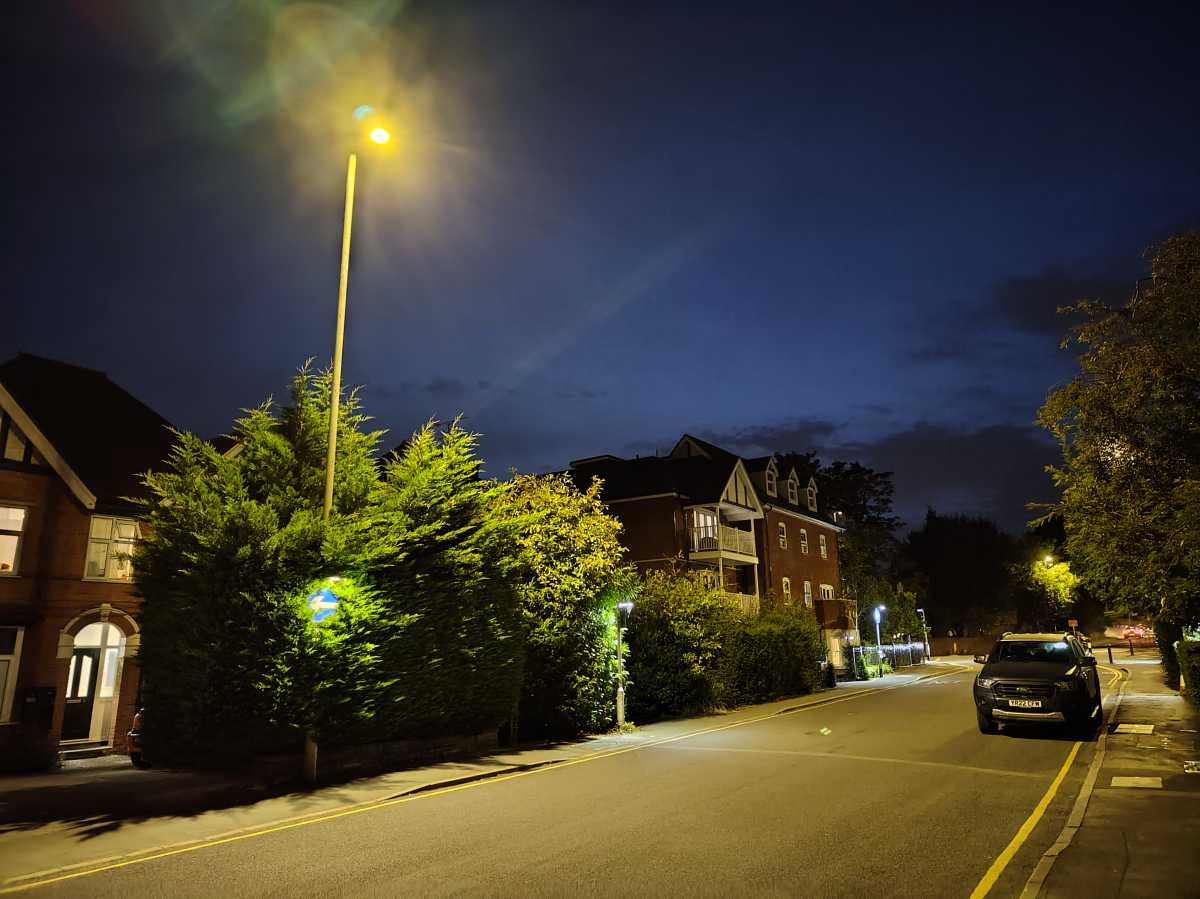Expert’s Rating
Pros
- Wonderful design
- Modular accessories are great fun
- Fairphone Moments is a brilliant idea
- Industry-leading software support
Cons
- Limited performance
- Sub-par cameras
- Auto-brightness doesn’t work as intended
Our Verdict
With a faster refresh rate, new modular accessories and a brilliant bit of software that prioritises mental wellbeing, the Fairphone (Gen 6) does a lot right. The slower than average processing power and inConsistent cameras hold the phone back, but they’re part of the trade-off for a phone centred around sustainability.
Price When Reviewed
This value will show the geolocated pricing text for product undefined
Best Pricing Today
Best Prices Today: Fairphone (Gen 6)

There are a few smartphone companies out there that tout their eco-friendly credentials but the Fairphone (Gen 6) is the only handset that really goes the distance.
As much as it pains me to admit, it does feel as though environmentally friendly practices from smartphone manufacturers just aren’t taking centre stage in the way that they were even a handful of years ago. Sure, Apple has made a push with its carbon-neutral branding, but key factors of sustainability such as the ease of repairing a phone have definitely fallen by the wayside, unless you work for Fairphone.
The Dutch company has made a name for itself by making sustainable tech the focus of its brand identity, and with two years having passed since the release of the Fairphone 5, the new Gen 6 model is here to reiterate its core goals whilst improving overall usability, and I am here for it.
At £499, it provides an affordable, sustainable and repairable alternative to the likes of Samsung, Google and others.
Design & Build
- Eye-catching colour profiles
- New modular system
- Easy to replace core components
Right off the bat, I love the design of the Fairphone (Gen 6). There are three colourways available, Horizon Black, Forest Green and Cloud White, but it’s the two latter options that really stand out in a lovely way.
I’ve had the white version in for review and compared to the fairly bland OnePlus Nord 5 that I had to hand, the Fairphone (Gen 6) is just a lot nicer to look at, particularly in how the recessed black camera sensors sit in contrast with the rest of the chassis.
The phone feels great in the hand, too, and thanks to the reasonably sized 6.31-inch display, it can be used comfortably one-handed as well. There’s Gorilla Glass 7i on the front of the phone to prevent scratches from appearing, and the phone itself is IP55 rated to help it withstand a splash of rain as you’re taking a call.
All of this should help maintain the Fairphone (Gen 6)’s integrity over time, but you are given extra peace of mind with a five-year warranty on your purchase.
the backing just slides right off and you’re perfectly at liberty to remove the battery, which feels otherworldly in 2025
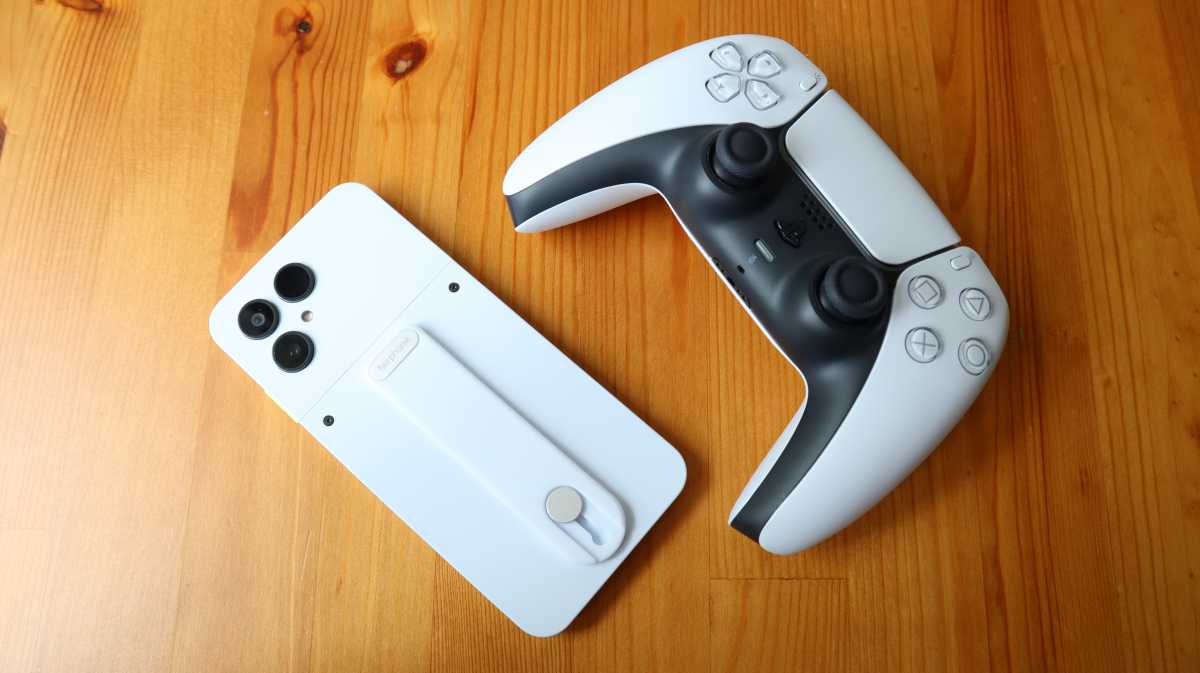
Thomas Deehan / Foundry
Having that extended warranty is exactly the type of customer-first feature that proves the Fairphone company wants you to have this device for a long time, and not simply be swept up in the yearly update frenzy. Of course, this isn’t just the only key aspect of the Gen 6’s design, it’s also very easy to take apart.
There are two small screws on the back of the device which can be taken out with a specific screwdriver. It’s similar to the CMF Phone 2 Pro, but the emphasis here is on repairability.
Once they’ve been removed, the backing just slides right off and you’re perfectly at liberty to remove the battery, which feels otherworldly in 2025. It’s also possible to add one of several modular accessories which are sold separately, like the CMF.
Fairphone was kind enough to also send over all of the mods that are currently available, including the finger loop and the lanyard, and it’s all very easy to swap them in and out. It’s a great selection to start, and I’m eager to see what else Fairphone is able to drum up here (a backing that adds MagSafe compatibility would be lovely).
Circling back to the design, however, one thing that did catch me off guard slightly is the placement of the main buttons. The power button and the volume buttons are further down than you’d expect to find them on most phones nowadays.
Still, after about a week of use, my brain finally adapted to remember where the buttons are, so it’s not a major issue.
Screen & Speakers
- Faster 120Hz refresh rate
- Stereo sound
- Auto-brightness is a bit unreliable
Even though there’s only been a slight uptick in price, the Fairphone 6 has finally made the leap to a 120Hz LPTO display, providing a faster refresh rate than the 90Hz cap on the Fairphone 5.
it’s a very easy screen to read when out in direct sunlight
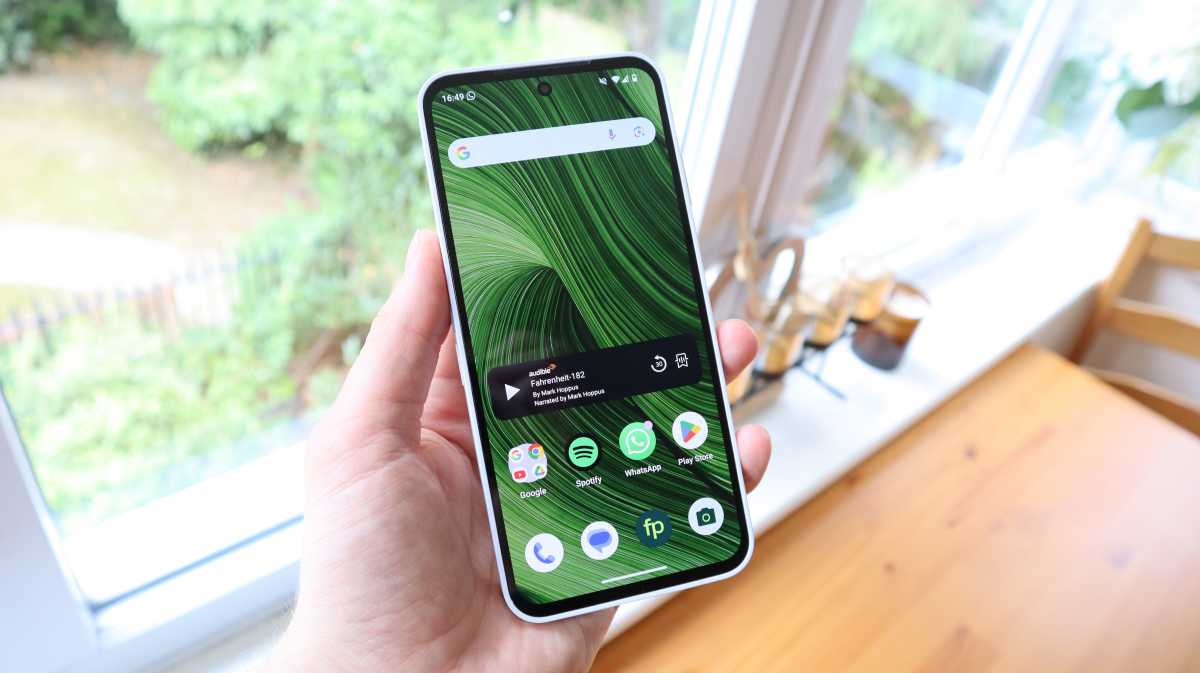
Thomas Deehan / Foundry
There is a slight trade-off in that the screen is now a smaller 6.31-inch panel (previously 6.4-inch) but I’m content with the change. Maybe it’s the result of using the standard 6.1-inch iPhones for so long but I much prefer phones that are easier to use one-handed as it never requires Olympian-level hand tricks to reach the top-end of the display.
The peak brightness rings in at 1400 nits and I will say that it’s a very easy screen to read when out in direct sunlight. I used the Fairphone (Gen 6) to document my progress on a recent 25K charity walk and I had no issues with taking pictures and uploading them (apart from stumbling over the occasional rock). Unfortunately, the same cannot be said for the auto-brightness feature.
I don’t quite understand why, but the auto-brightness, at least in my time with the phone, would almost always dip to 1% to the point where I couldn’t really see anything. In the end, I just disabled the feature and now manage the brightness manually, but it’s an issue I’ve honestly never had with another phone before.
When it comes to music playback, you’ve got stereo speakers on the Fairphone (Gen 6) and they do a respectable job. They don’t get quite as loud as the speakers you’ll find on other phones, but they are able to highlight the vocals in a given track; just don’t expect to pick up on much (or any) detail with regards to the bassline.
Specs & Performance
- Snapdragon 7s Gen 3 chipset
- Performance lags against the competition
- Gaming is still decent with certain titles
If you’ve already read our review of the Fairphone 5, then you’ll know that one of the key things that held the phone back was its chipset, and it’s a very similar experience this time around.
it’s hardly a massive leap
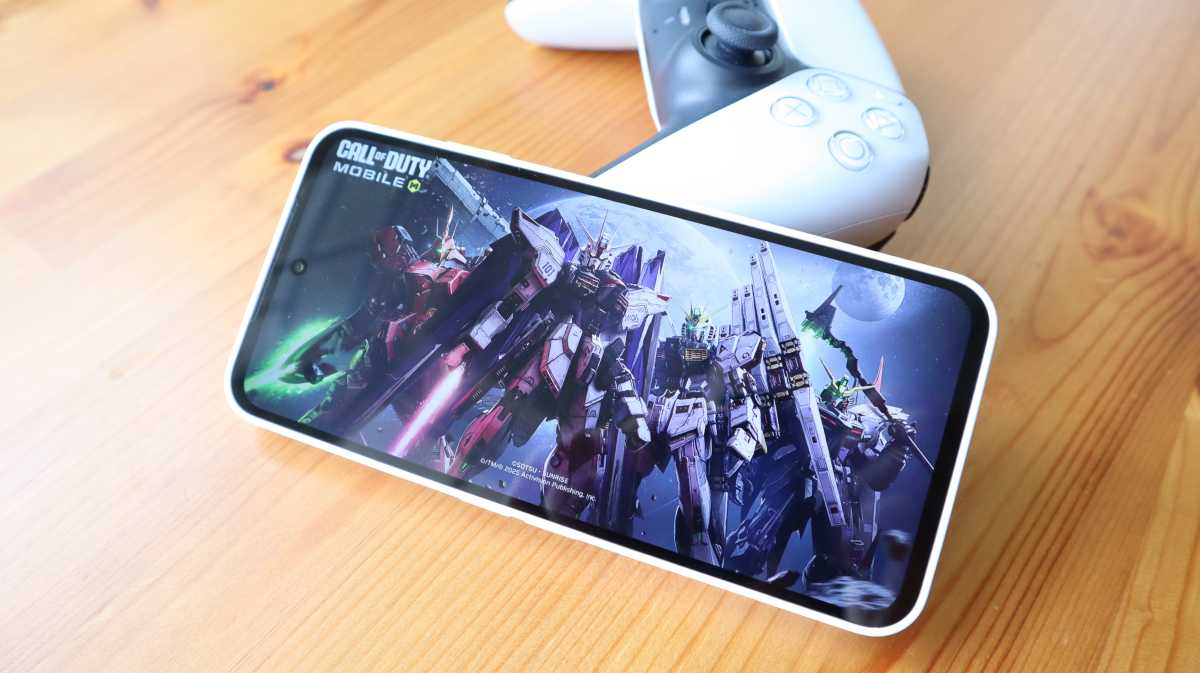
Thomas Deehan / Foundry
The chipset has changed, thankfully, jumping from a Snapdragon QCM6490 chip to the more powerful Snapdragon 7s Gen 3, but it’s hardly a massive leap. Given that the Snapdragon 8s Gen 3 is already starting to show its age, the 7s feels positively ancient in comparison to other mid-range picks around the same £499 price tag.
I constantly ran into slowdowns as I moved through menus, to the point where I just anticipated it every time I switched on the phone. App performance is a bit better, but you’re likely to see that slowdown on your way to opening your desired app.
Gaming is still possible with certain titles. Diving into a round of team deathmatch in Call of Duty Mobile, there was a fair bit of stuttering as the map and the players loaded in, but once the game started, everything ran smoothly and the gameplay was never affected.
Another aspect I noticed is that, even though the latest Fairphone does have 5G compatibility, the device would often opt for a lesser connection known as 4G+. I can only hope that this is part of a power-saving tactic on the part of Fairphone itself because I would hate to see any issues going forward as 5G becomes more essential with a greater degree of coverage.
Still, any trade-offs in the performance department feel like a fair compromise against the emphasis on sustainability that this phone brings to the table. No other handset out there can let you replace everything from the battery to the camera sensors in quite so easy a fashion, and that in itself needs to be applauded.
Perhaps Fairphone should make a ‘Pro’ model for those wanting more power, though.
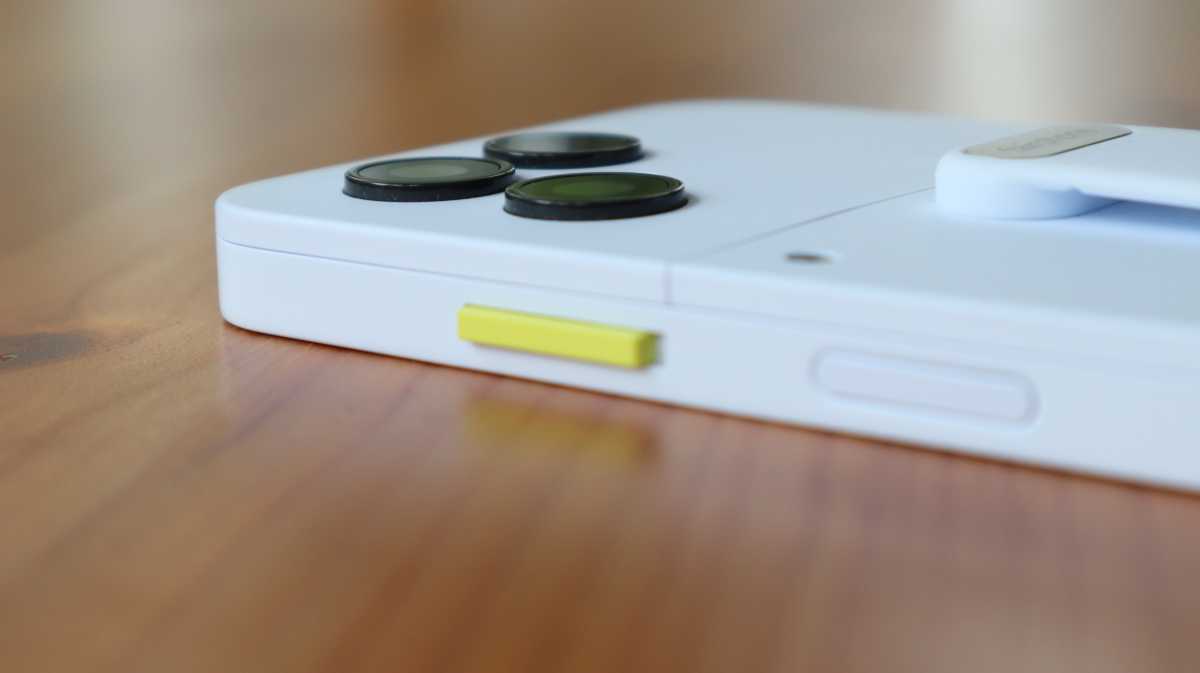
Thomas Deehan / Foundry
Fairphone 6 benchmarks
Cameras
- Wider aperture on the main camera
- Some shots can look a bit washed out
- Selfie camera works really well
There have been a few changes to the cameras in the Fairphone (Gen 6), and unfortunately, it’s led to a bit of a mixed experience. There’s still a 50Mp main wide-angle lens, but the aperture has been increased to 1/1.56″ to allow more light into each shot. The ultrawide angle sensor has seen its megapixel count drop from 50- to 13Mp, so you won’t be capturing anywhere near as much detail as before.
When taking shots during that aforementioned 25K walk, it was possible to nab some great pictures under the right conditions. At one point, we found a body of water that genuinely felt like an oasis amidst the summer heat and the ultrawide camera did a great job of capturing its natural beauty.
Speaking of natural beauty, a portrait shot of my brother, who was diligently walking the route alongside me, turned out great. There’s a softness to the picture that reminds me of the portrait shots you tend to get on mid-range Google Pixel phones, which is no bad thing. Unfortunately, shots like these weren’t exactly the norm.

Thomas Deehan / Foundry
More often than not, the shots I took ended up looking a little washed out in practice. You can see as much from a 2x zoom shot of a pair of horses that we came across. The colour of the horses themselves is lost in the shade, and the sky doesn’t look right at all.
I noticed a similar problem when taking an ultra-wide shot near London’s Southbank as the composition leaned a little too much into the grey of the sky.
I had no issues taking great selfies
There’s Super Night Mode for when the sun goes down, and while it’s far from industry-leading, it certainly gets the job done.
Thankfully, there is a redeeming feature in the selfie camera. Despite the fact that it’s also been downgraded from 50- to 32Mp, I had no issues taking great selfies with this thing that I was then more than happy to share on social media. It’s not quite as good as the selfie camera on the OnePlus Nord 5, but it’s up there.
Battery Life & Charging
- Solid, long lasting battery
- Two-days of use is possible
- Fast charging
Even though you can swap out the battery on the Fairphone 6, I can’t imagine that you’ll want to anytime soon as the included battery fares quite well already. It’s a 4415mAh cell which the company claims can get you up to two days of use at a time, and under the right circumstances, I’m inclined to agree.
On most days, I’ve found myself getting to bed with around 50% or above left in the tank, but that has been the result of using the phone mostly for checking social media and responding to text messages.
If that sounds like your average day then you should get on fine here. If you’re a heavier user, then you’ll definitely want to seek out a power outlet at the end of the day.
when it does come time to charge, you won’t be waiting around for long

Thomas Deehan / Foundry
When really putting the Fairphone (Gen 6) through its paces with using it as a hotspot for an hour, taking lots of pictures, scrolling through Instagram for about 40 minutes, several NFC payments and using Google Maps a few times to track down a location, the phone made it from 9:30am to 11:30pm with 24% remaining.
That’s not too bad at all for a battery this size, although for adding anything else into the mix, like gaming, I’d recommend keeping a power bank on your person.
Rather brilliantly, when it does come time to charge, you won’t be waiting around for long with the latest Fairphone. It can charge at 30W wired (there is no wireless charging), which in our usual 30-minute test took it from 0 to 55%.
Using a 65W fast charger, I was able to take the Fairphone (Gen 6) from 10% to a full battery in just an hour and 15 minutes. It’s worth noting that it reached 85% after just 40 minutes of charging, which is plenty to get you through the day if you’re in a rush.
Software & Apps
- Fairphone Moments is a game-changer
- Barely any AI features
- Clean take on Android
- Whopping 8-year software support
One of the things the Fairphone (Gen 6) really has going for it in its price range is the company’s hands-off approach when it comes to Android. There’s no gaudy overlay here, in fact the experience feels very similar to stock Android which you’ll find on the best Google Pixel phones.
There’s no bloatware to speak of, which is practically unheard of in the mid-range category as it’s a common practice to offset production costs. The only app to be included from the jump is the Fairphone app, and this is used to check your warranty, order spare parts when needed, and watch tutorials on how to replace components. It’s a well designed app and within the context of the company’s ambitions, it’s a welcome one too.
Unlike most manufacturers nowadays, Fairphone seems to have little to no interest in AI, and I can’t exactly blame the company for that. Personally, I’m sick of half baked AI features that are used to supplement genuine upgrades that I’d like to see, and given the environmental concerns regarding the use of AI, it would be a bizarre conflict with the brand’s mission if Fairphone did indulge the current AI craze.
There is Google Gemini here for getting quick responses to questions, but there’s no Circle to Search.
In terms of software support, Fairphone makes a bold claim of 8 years support
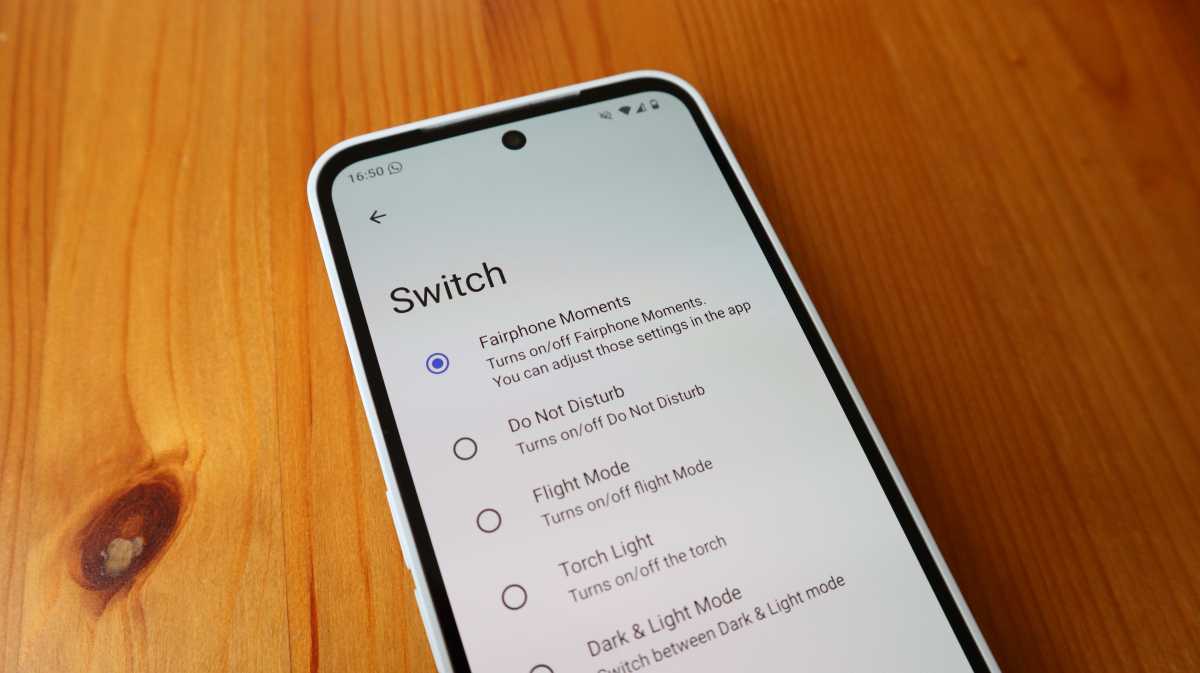
Thomas Deehan / Foundry
Instead of going down the AI route, Fairphone has moved in the opposite direction with a more mindful approach that encourages spending less time on your phone. Possibly inspired by the rise of dumb phones like the Light Phone III, Fairphone Moments is a phone locking software that can be toggled instantly by flicking the yellow switch on the side of the phone. Doing so then brings up a new homepage wherein you only have access to five apps at a time.
This is brilliant for when you’re trying to focus on work and you don’t want to be distracted by the allure of social media, plus you can create multiple ‘Moments’ that have different apps available. For example, if you’re out with the family and you don’t want to be distracted, you can tweak it so you have quick access to your camera, Google Maps for directions, etc.
There’s just something so satisfying about activating this software through a physical click, although this toggle can be changed to bring up different features like the torch or flight mode, but I think it’s best paired with Fairphone Moments.
In terms of software support, Fairphone makes a bold claim of 8 years support (to 2033) and this includes both security patches and OS updates. This is the longest you’ll find anywhere, outpacing the 7-year promise of Google and Samsung.
Price & Availability
- Slight price hike over the Fairphone 5
- There’s only one 256GB storage option
- Comes at a cost in the US
Unlike the previous Fairphone, there’s no 128GB model with the Gen 6 upgrade, but rather a single 256GB option with 8GB RAM that now comes in at £499/€599. That’s only just a tad more expensive than the £479 cost of the 256GB Fairphone 5, so it doesn’t feel like that much of an uptick if you do decide to go for the newer model.
While the Fairphone (Gen 6) can be bought directly from the Fairphone if you’re in the UK or most of mainland Europe, as well as retailers like Amazon and AO, the phone is only available via third-party retailers if you’re buying in the US, and there’s a higher price tag of $899 to boot.
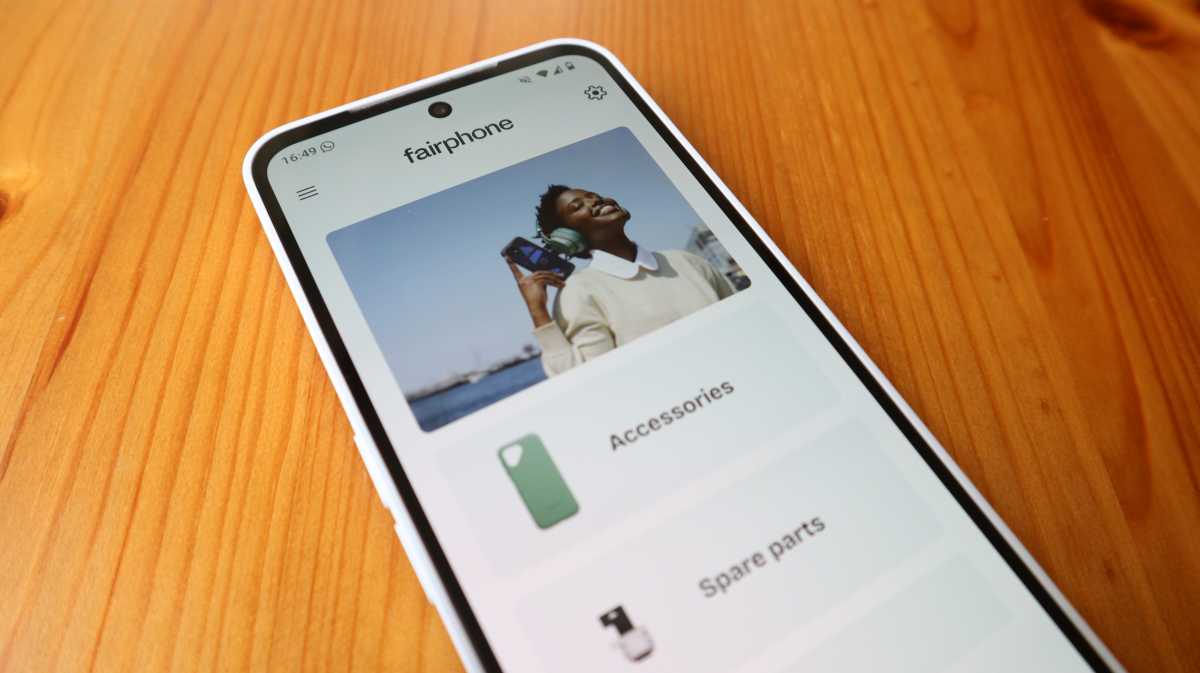
Thomas Deehan / Foundry
There are three colour variants available (Cloud White, Forest Green and Horizon Black) and there are no price differences between them.
Even though the Fairphone (Gen 6) does sit within the mid-range phone market alongside the likes of the Google Pixel 9a, Samsung Galaxy A56 and the Xiaomi 14T, I don’t think it’s quite comparable given that the focus here is on sustainability, so if that is your primary concern when it comes to buying a smartphone, the Fairphone (Gen 6) just has an advantage that the other phones do not.
Should you buy the Fairphone (Gen 6)?
I adore the Fairphone (Gen 6) and I only wish that more companies embraced the concept of a device that’s easily repairable. Even though the Snapdragon 7s Gen 3 chipset leaves a bit to be desired when it comes to everyday performance, it’s a fair trade-off when you consider just how easy it is to replace every part of the latest Fairphone, and the fact that you’re getting a five-year warranty to boot as well as class-leading software support.
The new modular accessories are a great idea as well, and I can’t wait to see what Fairphone is able to achieve here over time. Throw in the wonderfully tactile switch that toggles Fairphone Moments and you’ve also got a device that helps you to prioritise your mental wellbeing as you can avoid spending hours doomscrolling with just a click.
I wish that the main camera was better, as photos do look washed out under certain conditions, but it can take a solid portrait, and the selfie camera does capture a wonderful amount of colour and detail that makes it great for social occasions. Similarly, the battery life can go the distance and the phone is incredibly quick to charge, which I always love to see.
If sustainability, repairability and longevity are important to you, then the Fairphone 6 fits the bill.
Specs
- Android 15
- 6.31-inch P-OLED display
- 120Hz refresh rate
- 1400nits peak brightness
- Gorilla Glass 7i
- Snapdragon 7s Gen 3 chipset
- 50Mp 1/1.56″ main camera
- 13Mp 1/3.06″ ultrawide camera
- 32Mp selfie camera
- 256GB storage
- 8GB RAM
- 4415mAh removable battery
- 30W charging
- IP55
- 156.5 x 73.3 x 9.6mm
- 193g
- Eight years of updates
